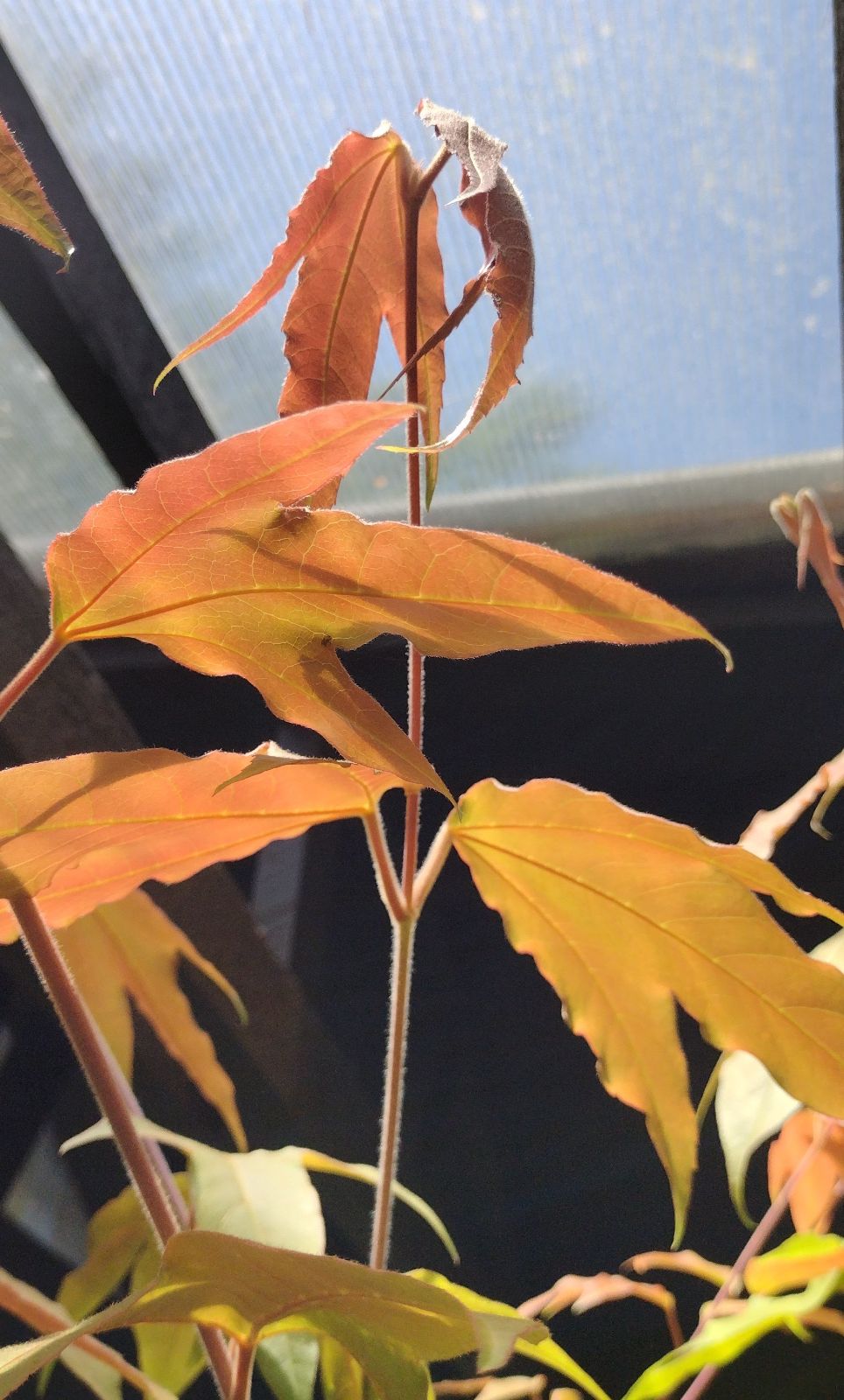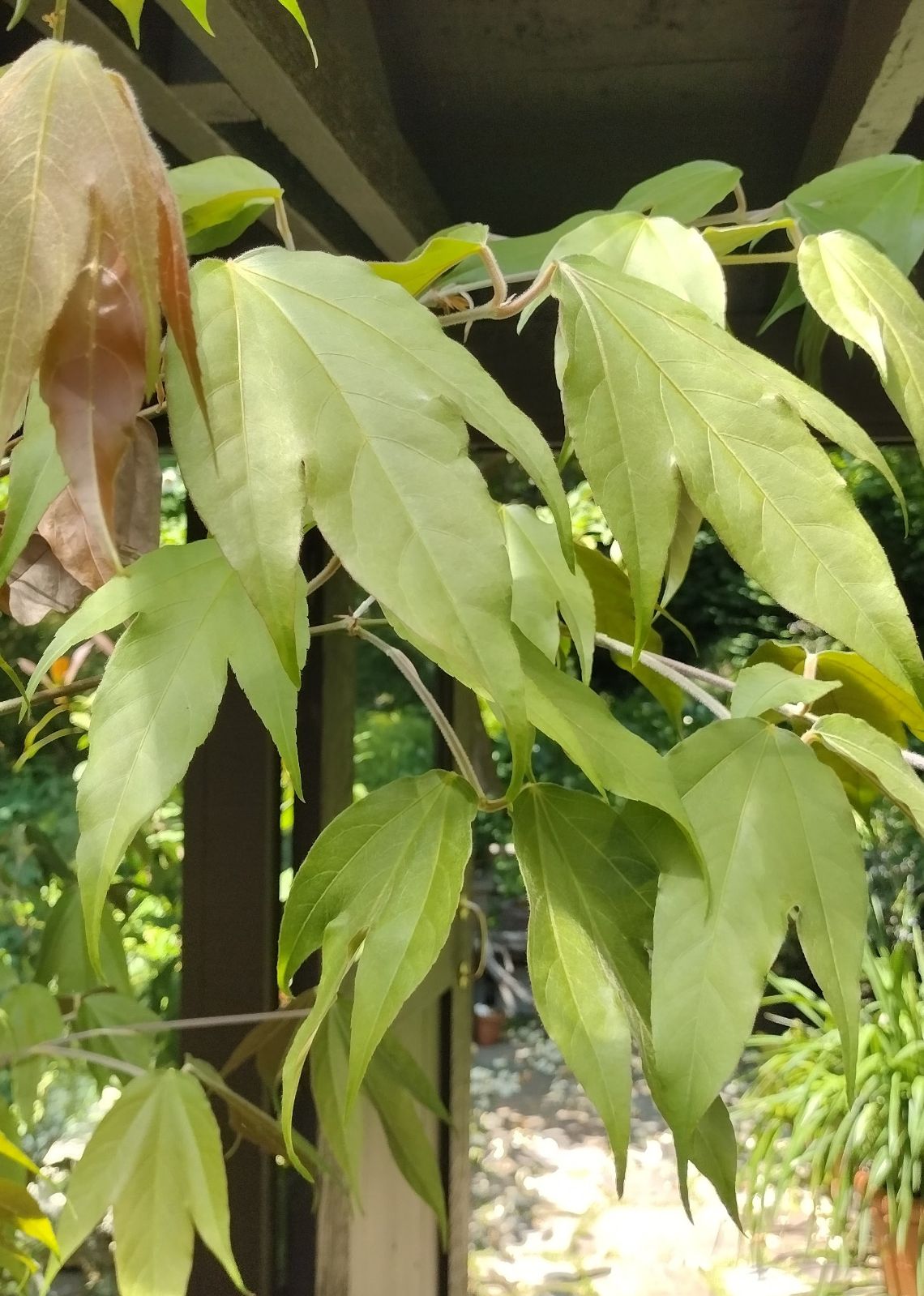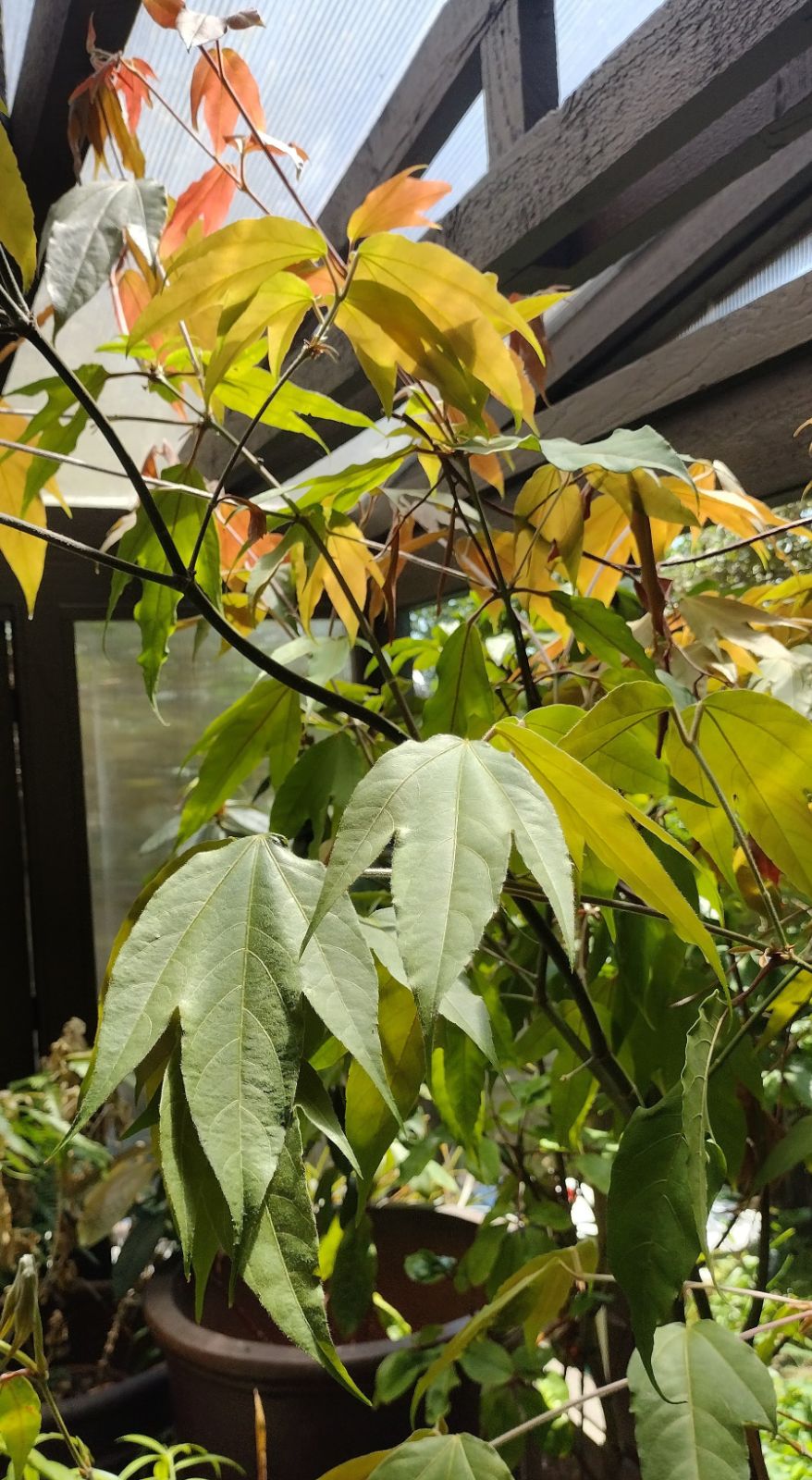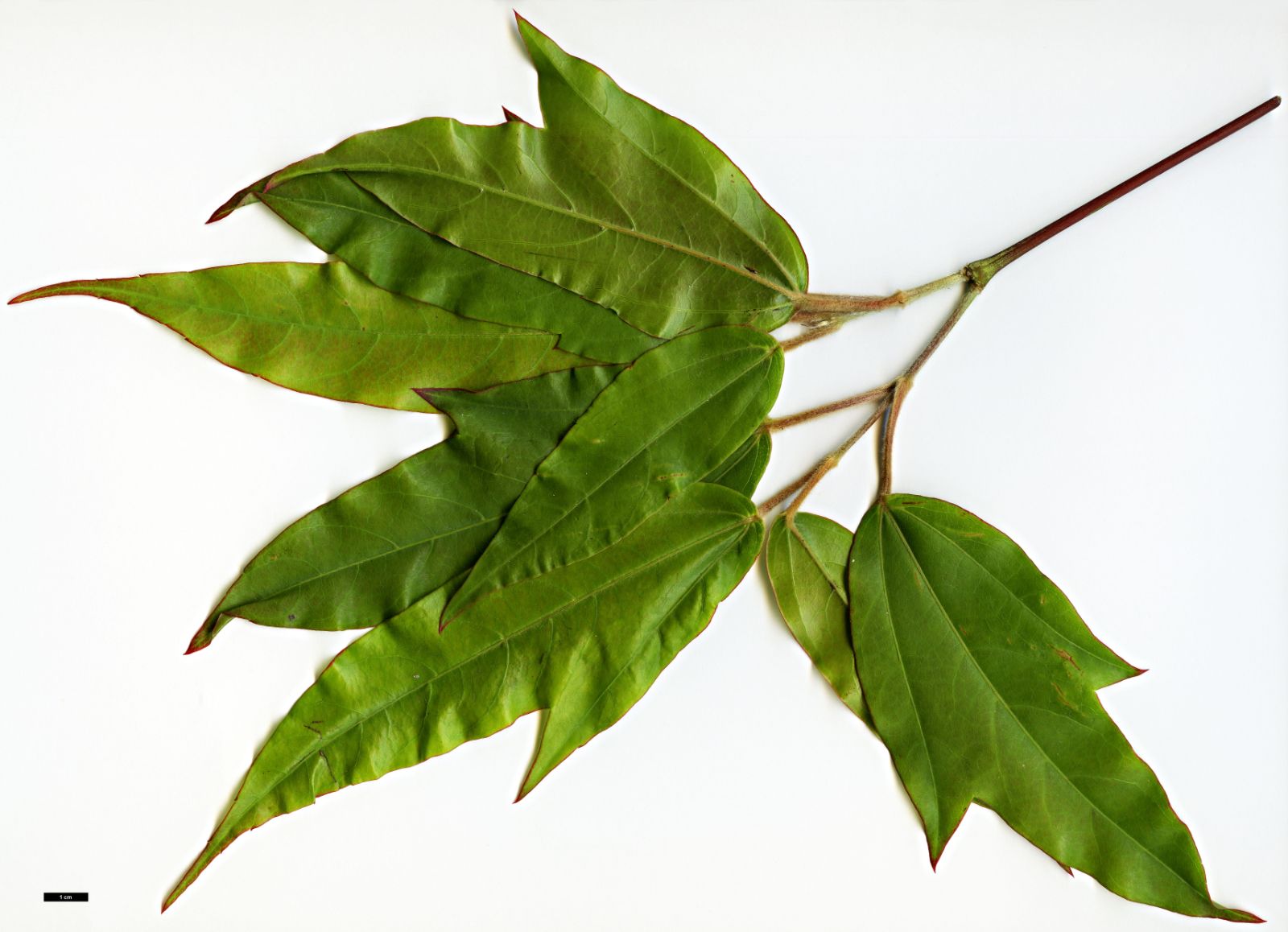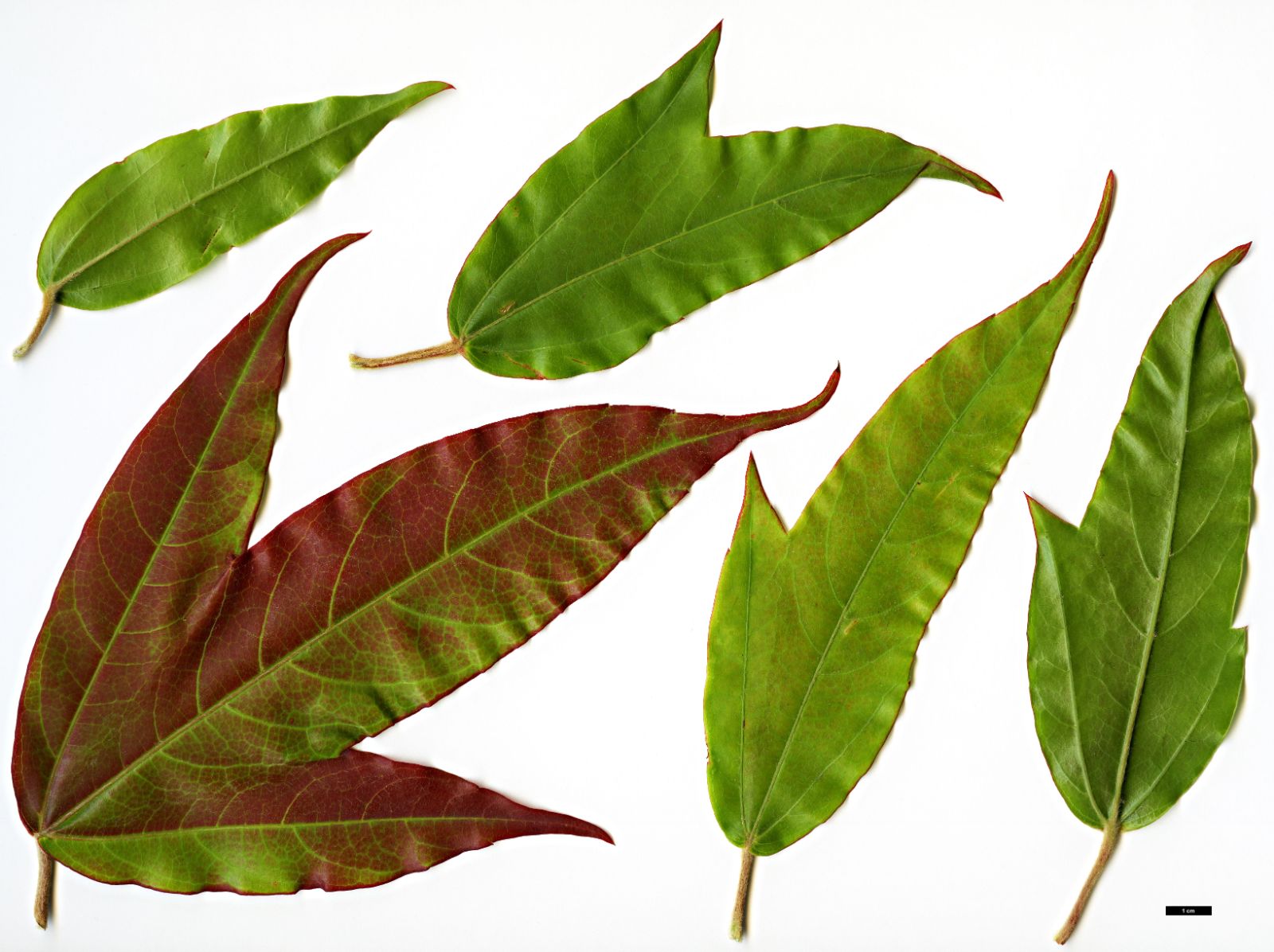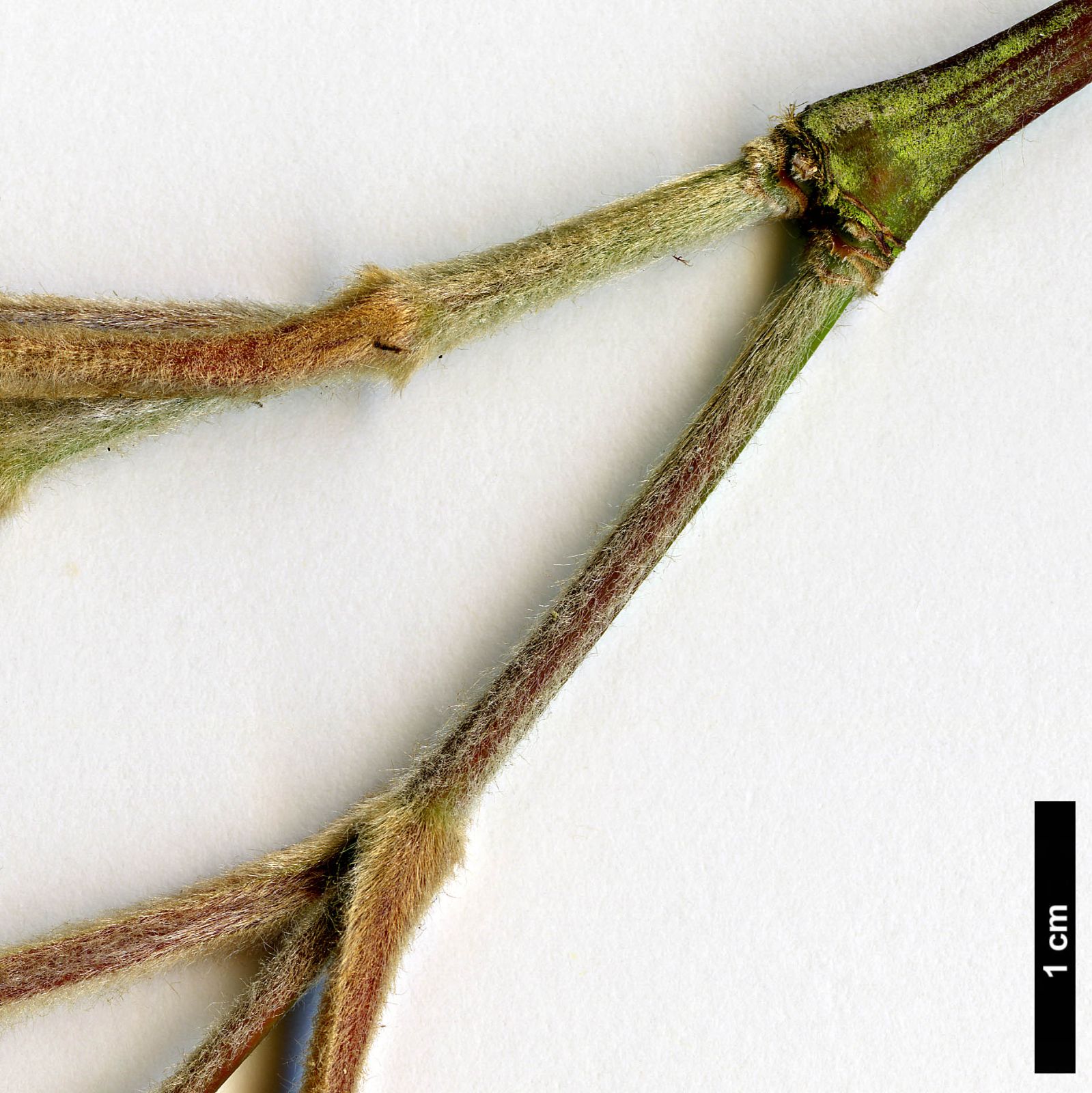Acer fenzelianum
Sponsor
Kindly sponsored by
Lawrence Banks
Credits
Dan Crowley (2020)
Recommended citation
Crowley, D. (2020), 'Acer fenzelianum ' from the website Trees and Shrubs Online (treesandshrubsonline.
Genus
- Acer
- Sect. Palmata, Ser. Sinensia
Common Names
- Fenzel's Maple
Synonyms
- Acer tonkinense subsp. fenzelianum (Handel-Mazzetti) A. E. Murray
Other taxa in genus
- Acer acuminatum
- Acer amplum
- Acer argutum
- Acer barbinerve
- Acer buergerianum
- Acer caesium
- Acer calcaratum
- Acer campbellii
- Acer campestre
- Acer 'Candy Stripe'
- Acer capillipes
- Acer cappadocicum
- Acer carpinifolium
- Acer 'Cascade'
- Acer caudatum
- Acer ceriferum
- Acer chapaense
- Acer chienii
- Acer circinatum
- Acer cissifolium
- Acer × conspicuum
- Acer cordatum
- Acer coriaceifolium
- Acer × coriaceum
- Acer crataegifolium
- Acer davidii
- Acer diabolicum
- Acer distylum
- Acer divergens
- Acer duplicatoserratum
- Acer elegantulum
- Acer erianthum
- Acer 'Esk Flamingo'
- Acer fargesii
- Acer flabellatum
- Acer forrestii
- Acer franchetii
- Acer × freemanii
- Acer fulvescens
- Acer 'Gimborn'
- Acer ginnala
- Acer glabrum
- Acer 'Gold Coin'
- Acer granatense
- Acer grandidentatum
- Acer griseum
- Acer heldreichii
- Acer henryi
- Acer × hillieri
- Acer hookeri
- Acer hyrcanum
- Acer japonicum
- Acer kawakamii
- Acer komarovii
- Acer laevigatum
- Acer laurinum
- Acer laxiflorum
- Acer lobelii
- Acer longipes
- Acer macrophyllum
- Acer mandshuricum
- Acer maximowiczianum
- Acer maximowiczii
- Acer metcalfii
- Acer miaotaiense
- Acer micranthum
- Acer 'Mindavi'
- Acer 'Minorient'
- Acer miyabei
- Acer miyabei × campestre
- Acer monspessulanum
- Acer morifolium
- Acer 'Mozart'
- Acer oblongum
- Acer obtusifolium
- Acer okamotoanum
- Acer oliverianum
- Acer opalus
- Acer orientale
- Acer palmatum
- Acer papilio
- Acer pauciflorum
- Acer pectinatum
- Acer pensylvanicum
- Acer pentaphyllum
- Acer pentapotamicum
- Acer pictum
- Acer pilosum
- Acer pinnatinervium
- Acer platanoides
- Acer platanoides × amplum
- Acer platanoides × truncatum
- Acer × pseudoheldreichii
- Acer pseudoplatanus
- Acer pseudosieboldianum
- Acer pubinerve
- Acer pycnanthum
- Acer rubescens
- Acer rubrum
- Acer rufinerve
- Acer saccharinum
- Acer saccharum
- Acer sempervirens
- Acer 'Serpentine'
- Acer serrulatum
- Acer shenkanense
- Acer sieboldianum
- Acer sikkimense
- Acer 'Silver Cardinal'
- Acer 'Silver Ghost'
- Acer sinense
- Acer sinopurpurascens
- Acer spicatum
- Acer stachyophyllum
- Acer taronense
- Acer tataricum
- Acer tegmentosum
- Acer tenellum
- Acer tetramerum
- Acer tibetense
- Acer tonkinense
- Acer triflorum
- Acer truncatum
- Acer tschonoskii
- Acer turkestanicum
- Acer tutcheri
- Acer ukurunduense
- Acer velutinum
- Acer wardii
- Acer 'White Tigress'
- Acer wilsonii
- Acer × zoeschense
A deciduous tree to 20 m. Bark grey to dark grey. Branchlets slender, lenticillate, persistently pubescent. Leaves chartaceous to subcoriaceous, ovate in outline, 8–10 × 10–14 cm, base rounded to cuneate, unlobed to shallowly 3-lobed, lobes ovate, apically acuminate, margins entire to remotely toothed, upper surface bright green, lower surface glossy green, glabrous except for tomentose along veins and along axils, sometimes persisting only in axils; petiole 2–3 cm long, red to green, tomentose. Inflorescence, terminal, corymbose. Samaras 1–1.2 cm long, wings spreading obtusely. Nutlets convex. Fruiting in September (China) (Xu et al. 2008).
Distribution China Southern Yunnan Vietnam
Habitat Forests and valleys between 1100 and 1700 m asl.
USDA Hardiness Zone 9-10
RHS Hardiness Rating H3
Conservation status Vulnerable (VU)
Rare in cultivation, as in the wild, Acer fenzelianum appears to be represented in cultivation only by one collection, that of Dan Hinkley, under DJHV 06173, collected in 2006 from Seo My Ty in the Hoan Lien Mountains of northern Vietnam, where it was growing with another maple, A. pictum, as well as various Magnolia species and members of the Fagaceae (D. Hinkley, pers. comm. 2018). Since 2006, the area in which this collection was made has unfortunately been denuded of much of its woody flora due to deforestation and though some taxa are regenerating, neither species was found there in 2018 (pers. obs. 2018). DJHV 06173 came to be circulated under A. tonkinense subsp. liquidambarifolium, a synonym of A. tonkinense, and, as of spring 2020, is listed as available as such at Crûg Farm Plants (2020). It is also being grown at the Elisabeth C. Miller Botanical Garden, Seattle, inside the alpine house, where it has reached c. 2.5 m tall and may soon be moved outside (D. Justice, pers. comm. 2020). While the limits of its hardiness are somewhat untested, and though seemingly tender, a plant of A. pictum grown from seed collected at the same Seo My Ty locality (DJHV 06144) has proved hardy at Westonbirt Arboretum, Gloucestershire (pers. obs. 2020).
It is reasonably assumed that the species is named after G. Fenzel, whose collection, Fenzel 44, collected in Sapa, northern Vietnam, represents its type specimen. However, some taxa bearing this epithet, for example Cyperus fenzelianus, are named for an E. Fenzl (1808–1879), an Austrian botanist and former head of the botany department at the Natural History Museum, Vienna. Thus, reference to Fenzl in relation to the naming of Acer fenzelianum in van Gelderen et al. (1994) is considered to be an error.
Morphologically Acer fenzelianum appears closest to A. tonkinense. This is perhaps unsurprising, given the confusion in the naming of the aforementioned collection, while Murray (1969) had treated A. fenzelianum as a subspecies of A. tonkinense. However, the two species are easily split by the abundant, grey to yellowish pubescence on the petioles, branchlets and inflorescences of A. fenzelianum, which in A. tonkinense, aside from the pubescent disk and ovary, are glabrous. Fang (1939) notes that this tomentum may persist for four years.

